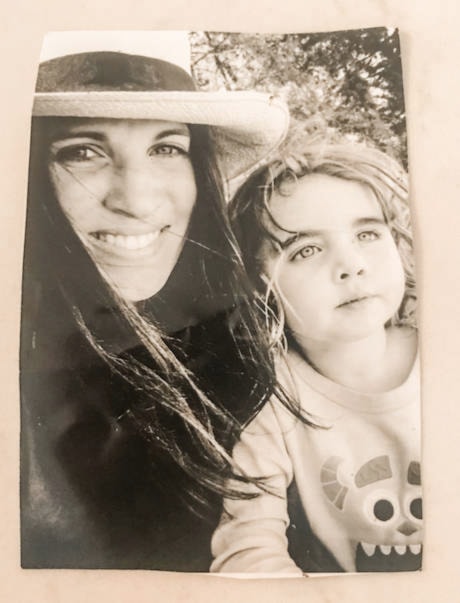The passage of time does little to lessen the burden borne by a mother who91¬„¡ƒ ”∆µôs lost a child.
For Cheryl-Lynn Townsin, making a documentary after the death of her six-year-old daughter, Lexi, in 2019 from Blau Syndrome is about sharing stories of Lexi91¬„¡ƒ ”∆µôs battle and the struggles of other children with rare diseases.
91¬„¡ƒ ”∆µúWe all have our ways of dealing with grief,91¬„¡ƒ ”∆µù Townsin said. 91¬„¡ƒ ”∆µúFor me it91¬„¡ƒ ”∆µôs about finding purpose. This film gave me the purpose to be able to tell the tragic story of Lexi to help others.91¬„¡ƒ ”∆µù
Townsin completed RARE HUMANS - Turning Hope into Action as the capstone project for her Master of Arts degree in Global Leadership.
The documentary chronicles Lexi and the children in seven other families91¬„¡ƒ ”∆µô trials, tribulations and triumphs as they cope with a variety of rare diseases. 91¬„¡ƒ ”∆µúI was also fortunate to interview the world91¬„¡ƒ ”∆µôs leaders in the rare disease community and to share their stories,91¬„¡ƒ ”∆µù Townsin said. The release of the film coincided with Rare Disease Day on the last day of February, called the rarest day on the calendar.
RELATED:
Townsin originally planned the film91¬„¡ƒ ”∆µôs focus to be on Lexi91¬„¡ƒ ”∆µôs battle with Blau Syndrome, which is believed to be caused by a gene mutation, with symptoms usually beginning to surface around the age of four. 91¬„¡ƒ ”∆µúOnce I got started, I broadened the picture to include seven other families dealing with rare diseases.91¬„¡ƒ ”∆µù
91¬„¡ƒ ”∆µúEight rare disease families in North America changing the future of medicine as they pursue their missions to cure the incurable,91¬„¡ƒ ”∆µù is how Townsin described the project. 91¬„¡ƒ ”∆µúThese inspiring stories of love, loss and determination prove that every one of us has the ability to turn hope into action.91¬„¡ƒ ”∆µù
The COVID-19 pandemic sidelined her plan to hold a symposium at Royal Roads University (RRU) with doctors from around the world who specialize in rare diseases, but Townsin did manage to connect with a number of global authorities. They include Dr. Ronald Cohen, the CEO of SickKids Hospital, renowned geneticist Dr. Donald Kohn from the University of California at Los Angeles, Dr. Durhane Wong-Rieger, president and CEO of the Canadian Organization for Rare Disorders, and Dr. Ann Pariser, director of the National Institute for Health/Office of Rare Disease Research in Bethesda, Maryland.
Half of the more than 400 million people who have rare diseases are children, Townsin noted. 91¬„¡ƒ ”∆µúThat91¬„¡ƒ ”∆µôs more than AIDS and cancer combined,91¬„¡ƒ ”∆µù said Townsin, who has worked at RRU since 2004, most recently as student engagement co-ordinator.
91¬„¡ƒ ”∆µúIt91¬„¡ƒ ”∆µôs a misnomer to call them rare diseases. Most people aren91¬„¡ƒ ”∆µôt aware that rare diseases are one of the leading causes of death, and 30 per cent of children with a rare disease will not live until their fifth birthday. These people are changing the future of medicine. Eighty per cent of rare diseases are genetic, so gene therapy offers the potential for finding a cure for so many diseases.91¬„¡ƒ ”∆µù
RELATED:
Townsin says the greatest challenges are raising awareness and securing funding for the research needed to find cures. Canada is one of the only developed countries with no framework for drugs for the treatment of rare diseases, she said, and research is hindered by the fact more funding is allocated globally to common diseases. She referenced a quote from Eli Pariser that illuminates one aspect of the issues:
91¬„¡ƒ ”∆µúWe look at cancer as a leading example,91¬„¡ƒ ”∆µù Pariser said. 91¬„¡ƒ ”∆µúCancer is not one disease. Cancer has hundreds of diseases and it may even be thousands of diseases as we start to unravel this, but cancer is a singular word that doesn91¬„¡ƒ ”∆µôt even have an 91¬„¡ƒ ”∆µòs91¬„¡ƒ ”∆µô on it and the cancer community has just done a fantastic job about speaking about cancer as one thing when it91¬„¡ƒ ”∆µôs not.91¬„¡ƒ ”∆µù
91¬„¡ƒ ”∆µúThe most eye-opening part of my research revolved around the work of Dr. Sidney Farber, who91¬„¡ƒ ”∆µôs known as the father of chemotherapy,91¬„¡ƒ ”∆µù Townsin said. Farber realized they needed a poster child to promote unified support for dealing with the numerous types of childhood cancer and settled on a picture of a boy they called Jimmy that became synonymous with the movement.
RELATED:
91¬„¡ƒ ”∆µúIt changed the profile and dramatically improved funding,91¬„¡ƒ ”∆µù Townsin said. She believes rare diseases need a similar approach and a unified voice like Farber advanced so successfully. 91¬„¡ƒ ”∆µúIf you think of these diseases as rare, that undermines the significance of the problem,91¬„¡ƒ ”∆µù she explained. 91¬„¡ƒ ”∆µúWe need something dramatic like that to raise awareness and generate funding. We need these stories. That91¬„¡ƒ ”∆µôs the reason we decided to share Lexi91¬„¡ƒ ”∆µôs story and the stories of the other children in the film.91¬„¡ƒ ”∆µù
For a trailer of the film, visit this The full documentary, to be distributed to film festivals around the world, is available free until the end of March .
For more news from Vancouver Island and beyond delivered daily into your inbox, please
rick.stiebel@goldstreamgazette.com



